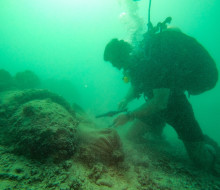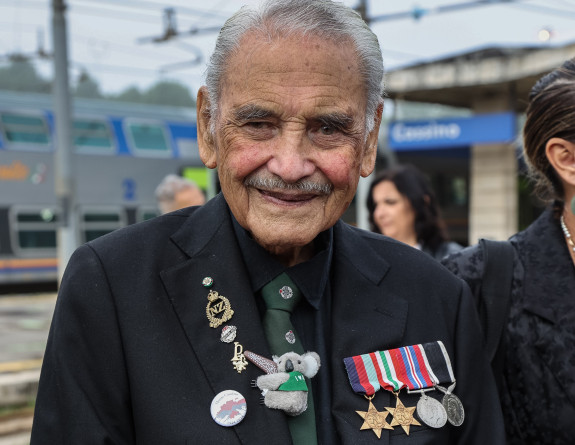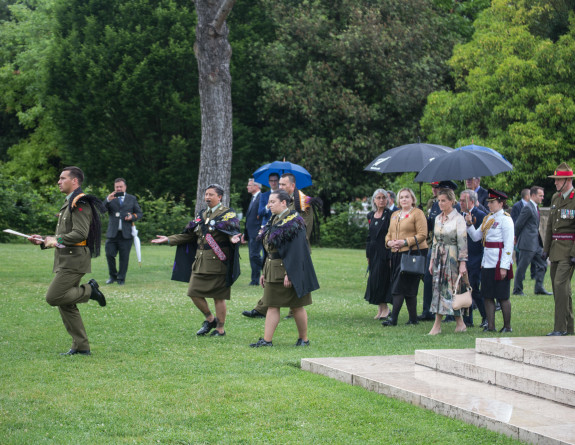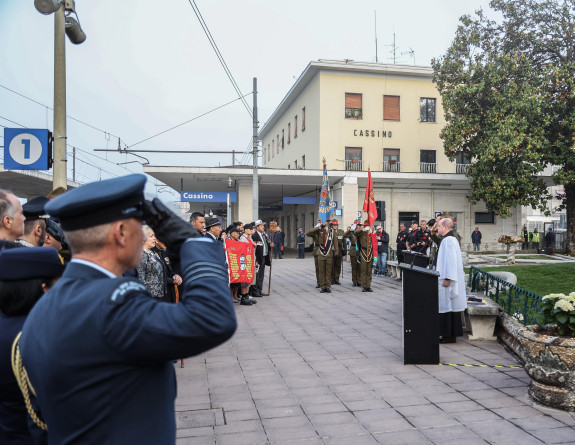
Second World War-era bombs in Vanuatu made safe by Navy divers
26 June 2024
Unfortunately you are viewing this website on an outdated browser which does not support the necessary features for us to provide an adequate experience. Please switch to a modern browser such as latest version of Google Chrome, Mozilla Firefox, Apple Safari or Microsoft Edge.
Ngā mihi nui
Eighty years ago the ridges and hills around the Italian town of Cassino were in ruins, after some of the bloodiest and most gruelling battles fought by New Zealand forces in the Second World War.
On Monday (NZ Time), prayers and karakia rang out as people gathered in remembrance of those who served and fell at the Battles of Cassino.
Among them were Sir Robert ‘Bom’ Gillies - the last remaining member of 28 (Maori) Battalion, Her Royal Highness, the Duchess of Edinburgh, Cassino Mayor Enzo Salera, and New Zealand’s Minister of Defence Judith Collins KC, whose late father Percy Collins served at Cassino.
A New Zealand Defence Force (NZDF) contingent led the New Zealand National Commemorative Service at the Cassino War Cemetery, to recognise the significance of this shared experience, place and sense of occasion.
The Chief of Defence Force was represented by Brigadier Jim Bliss, Head of New Zealand Defence Staff London, who spoke of the many gallant acts of New Zealand soldiers as they repeatedly engaged with the enemy at close quarters.
“Battlefield conditions at Cassino meant that armoured support was routinely bogged down in the mud or unable to advance,” Brigadier Bliss said.
“Lieutenant Collier Beswick, of 19 NZ Armoured Regiment, was awarded a Military Cross for evacuating the crews of two tanks that had been destroyed by the enemy.
“Unable to find shelter or cover, and being fired on continually by machine-guns and mortars, he went with one of his men against a heavily entrenched German machine-gun position.
“Although wounded three times, he took successful offensive action against this post and wiped out the gun, taking seven prisoners. He then got his men into the shelter of a German dug-out, and after last light brought them all out, together with the prisoners, over 1000 yards of shelled territory.”
New Zealand’s efforts at Cassino through February and March 1944, proved to be among the most costly battles of the Second World War for the 2nd New Zealand Division - of the 1,481 casualties, 343 lost their lives.
At Cassino, the 2nd New Zealand Division along with 4th Indian Division, comprised the New Zealand Corps commanded by Lieutenant-General Sir Bernard Freyberg. Fighting units included six New Zealand infantry battalions an armoured brigade, divisional artillery and engineer units totalling 17,000 men.



Left: Sir Robert ‘Bom’ Gillies, the last remaining member of 28 (Maori) Battalion B Company, centre: the NZDF Māori Cultural Element clears the way to welcome the Official Party, right: A NZ Service of Remembrance, Cassino Railway Station
This year’s commemorations also saw the NZDF contingent take part in the New Zealand Service of Remembrance at the Cassino Railway Station, held the following morning at dawn on Monday (local time).
The railway station was of strategic importance to the battles. The first New Zealanders to fight there were the men of 28 (Maori) Battalion A and B Companies, and a month later 26 New Zealand Battalion fought and captured the railway station, holding it for nine days while suffering grievous loss of life.
More than 150 members of 28 (Maori) Battalion were killed, wounded or taken prisoner, and 26 Battalion suffered nearly 250 wounded or killed.
Sir Robert ‘Bom’ Gillies, the last remaining member of 28 (Maori) Battalion B Company, made the long journey to Italy for the commemorations.
“This is my seventh trip back to Cassino and I will never forget the death and waste of life. When coming back to Cassino my memories become even more vivid,” Sir Robert said.
The 99-year-old, who is from Rotorua, remembers those who fought by his side.
“It is sad for me because of all the fellas I served alongside that didn't make it home.
“It's hard to believe it is 80 years since it happened, such a waste of life. It’s good to mark the 80th anniversary and be there in remembrance of all that fell.
“Visiting the graves and railway station makes me remember the disaster that happened there and it brings back many memories, especially of the fellas I knew.”
The ferocity of the fighting at Cassino had few parallels during the Second World War and the NZDF contingent was honoured to acknowledge the New Zealand soldiers who served there, alongside their Commonwealth, French, Polish and American allies who all made the ultimate sacrifice.
Minister of Defence Judith Collins delivered a reflection at the railway station service.
“This anniversary has been marked by services held by all the nations involved in the struggle,” she said.
“Most New Zealand soldiers who fought here were well aware that they were defending the right of all people to live without the threat of aggression, to enjoy their human rights and the other values that are central to our nation’s ethos.”
New Zealand Army Chaplain Brendan Drew led those gathered in prayer, to ask for God’s help to remember and honour those who died, and to help people commit themselves to honouring sacrifice through continuing to work for peace.
“We both pay attention to the spiritual/wairua side of life, which is our connection to something bigger than ourselves and the here and now. What that something is, is different to each of us,” Chaplain Drew said.
“For me it is a connection to the Christian God, while for others it is other gods, or their ancestors. Our tikanga, traditions and prayers all play a big part in shaping how we experience and honour that connection.”
The Regimental Colour of 2nd/1st Battalion, Royal New Zealand Infantry Regiment, which bears the battle honour CASSINO I, and the 28 (Maori) Battalion Banner were carried to Italy and paraded at both services.
Cassino eventually fell in May 1944 to British and Polish troops, with support from the New Zealand artillery.